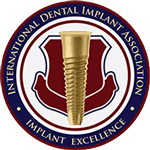What is Gum Disease?
Many people have a very serious disease in their mouth and may not even know it!
Gum disease, or periodontal disease, is an infection of the gums and bone that hold teeth in place.
Gum disease is often painless and many people are unaware that they have gum disease until it has become more advanced.
For more information on what gum disease is click here http://www.ada.org/~/media/ADA/Publications/Files/for_the_dental_patient_jan_2011.ashx
It is estimated that approximately half of all Americans may have some degree of periodontal disease
What Causes Gum Disease?
In a nutshell – Bacteria! There are millions of bacteria in your mouth at any given moment and specific types of bacteria cause irritation and inflammation of the gum tissue. If the bacteria (plaque) in your mouth are not cleaned off regularly through home care such as brushing and flossing and by regular professional cleanings, they may start to cause gum disease or loss of bone that supports your teeth.
How do I know if I have Gum Disease?
During regular dental checkups, your dentist and hygienist will take x-rays (radiographs) to check your bone levels and also check the depths of the pocketing spaces surrounding your teeth to make sure the gum pockets are staying healthy. Gum pockets are measured in millimeters and if deeper gum pockets 5 mm or greater are found and bone loss is seen on x-rays it’s time to act!
Here are some warning signs that you may have gingivitis or gum disease:
Gums that bleed easily or have pus around them
Red, swollen or tender gums
Bad breath or bad taste
Gums that have pulled away from the teeth
What can be done to treat Gum Disease?
The great news is, there are many things that can be done to help treat gum disease. Changing your home care routine can be a very helpful start. Electric toothbrushes such as a sonicare and using a waterpik (water irrigator for your gums) are a few ways that can help remove more bacteria.
Dr. Andersen may also recommend scaling and root planning (SRP) which is a deeper cleaning that helps remove plaque from deeper pockets to help the pockets heal. Local anesthetic may be placed prior to SRP to make sure that you are comfortable for the cleaning. After the pockets are cleaned an antibiotic may be placed in the gum pocket and an oral rinse may also be recommended to help fight off those bacteria and let the gums heal. To learn more about periodontal therapies please visit these links https://artisandentalmadison.com/education/periodontal-therapy/ or http://www.ada.org/~/media/ADA/Publications/Files/patient_46.ashx
What happens after Scaling and Root Planing?
After an agreed upon time frame, you will return to the office and we’ll recheck the depth of the gum pockets to see if the measurements are improving and also to see how your home care routine is going. Periodontal maintenance cleanings will be recommended every 3 to 4 months to keep the tissues stable.
What happens if my gum disease gets worse?
In more advanced cases of gum disease or gum disease that doesn’t respond to SRP, you may be referred to a periodontist (gum specialist) for further evaluation or recommendations to get the infection under control.
We hope that all of our patients have healthy mouths all the time, but if not, we’re ready to work with you to treat any gum disease that may be present.















